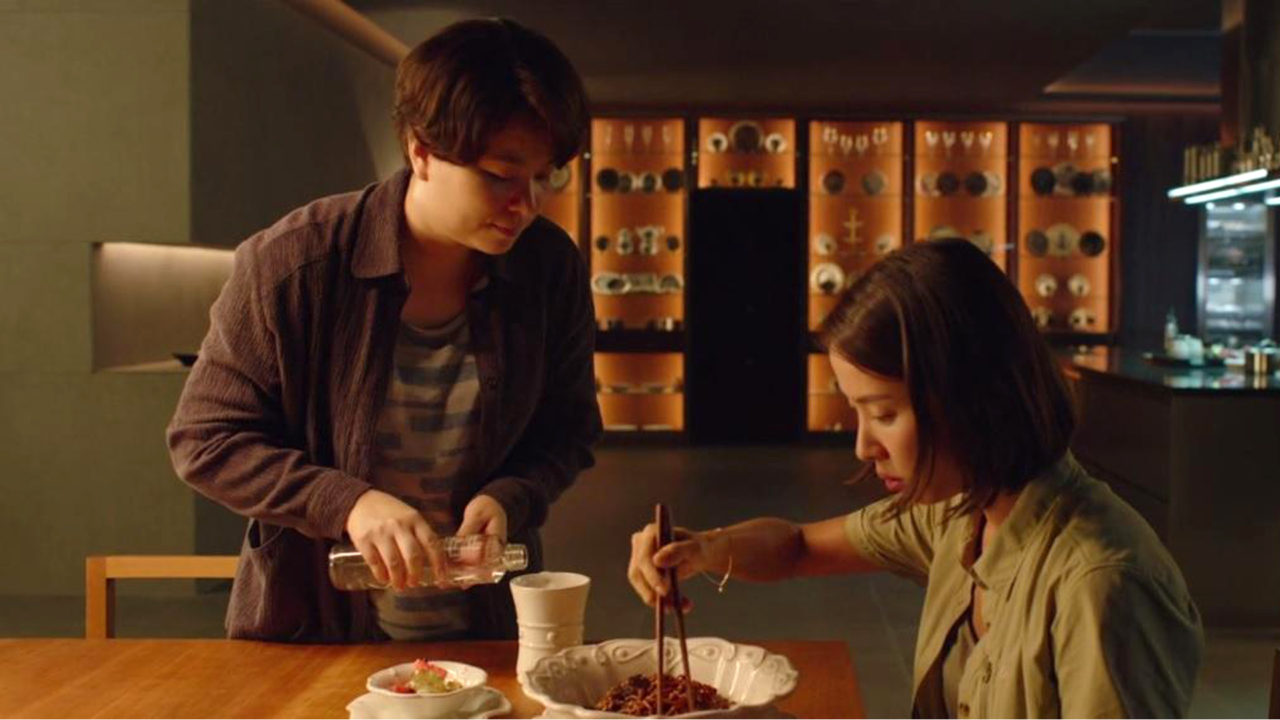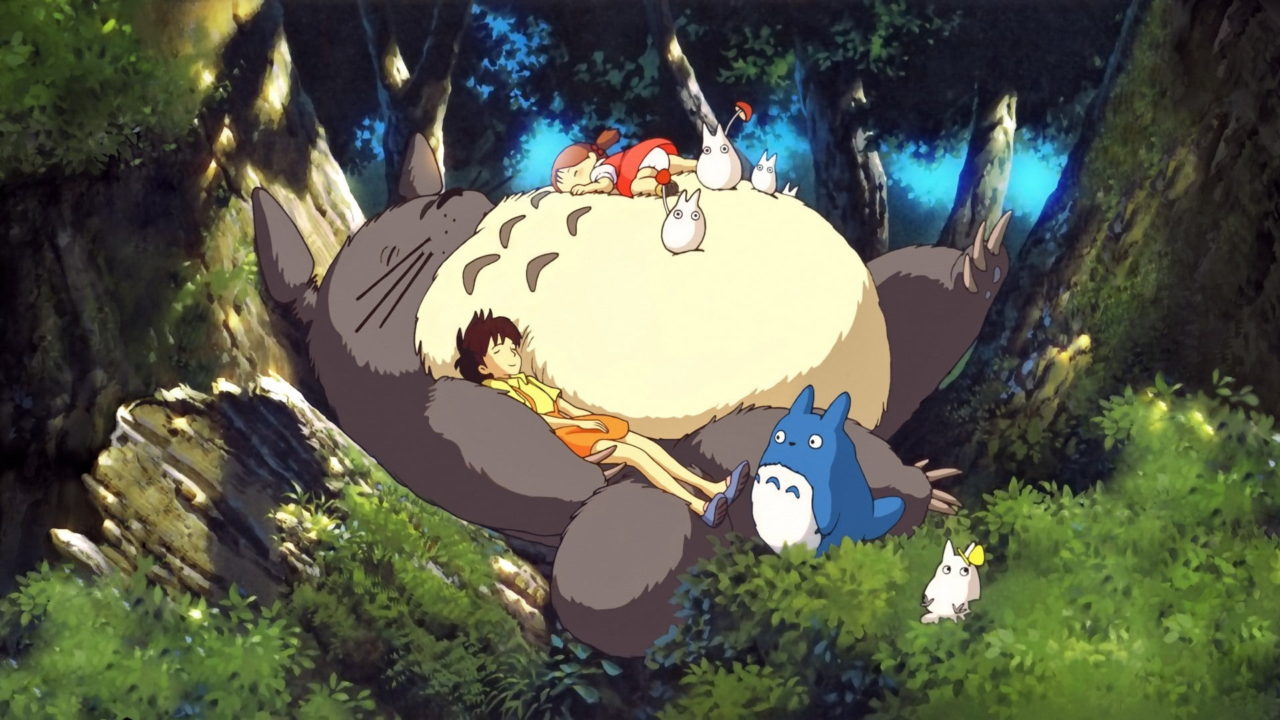Welcome to the Goggler Test Kitchen, an infrequent series in which we attempt to recreate, localise, update, even upgrade, our favourite foods from our favourite films. For our first instalment, we decided to work out the best possible version of Parasite’s “Ram-Don”. Because why not?
I realise that spending a fortune on instant ramen belies its very reason for being. I am well aware of the point Bong Joon-ho was trying to make in that pivotal scene in Parasite, deftly illustrating class disparity by way of this most basic of meals. The dish, a Bong Joon-ho contrivance, is something he concocted to further telegraph the film’s themes.
That being said, the idea of taking two comforting things, the humble two-minute noodle and a fine, well-marbled steak, and combining them, makes for an incredibly delicious proposition.
High-end, chef-y takes on ramen aren’t something novel. Back in 2012, in the Anthony Bourdain produced series The Mind of a Chef, host David Chang obsesses over ramen in almost every one of the first season’s 16 episodes. From eating the uncooked noodles raw, sprinkled with nothing more than the contents of the seasoning packets, to creating whimsical versions of gnocchi and cacio e pepe, Chang is hell-bent on showing us just how versatile the instant noodle can be.
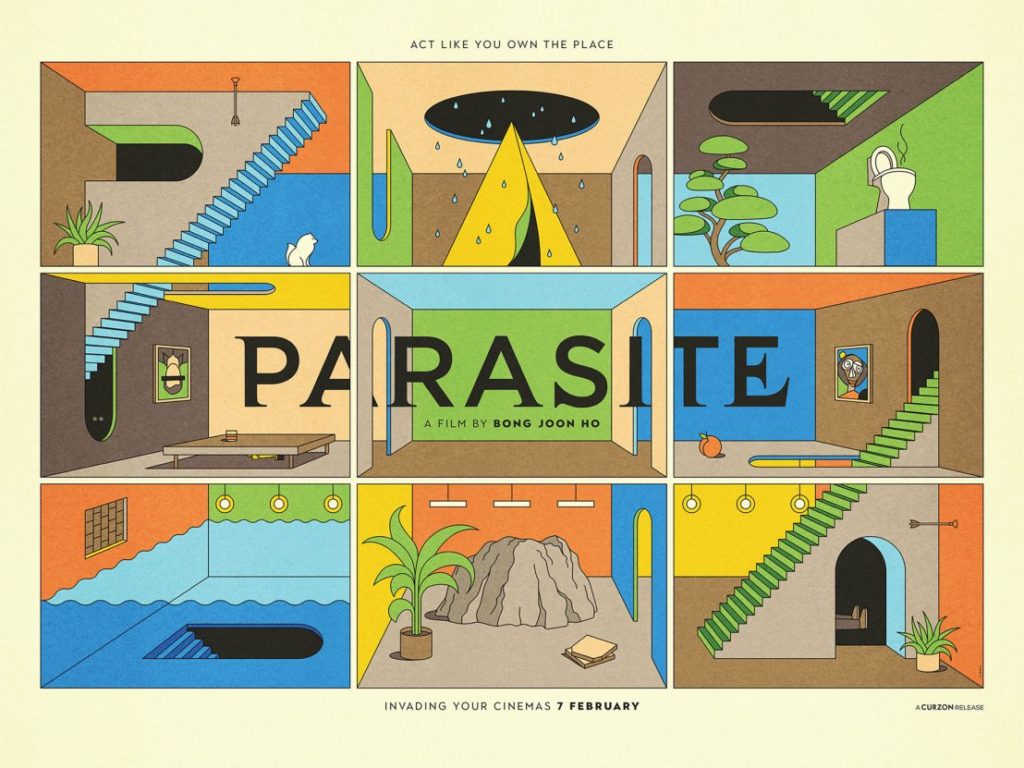
If you haven’t yet seen Parasite, gourmet “ram-don” makes its debut when the Parks, returning home from an aborted camping trip, call their housekeeper, Mrs. Kim, to request that she prepare a bowl of the now infamous noodle dish for their young son. Mrs. Kim hangs up the telephone with no idea what “ram-don” is. In the eight minutes it takes for the Parks to get home, she nevertheless manages to cobble something together using two types of instant noodles and some cubed steak.
Much like the dish itself, the term “ram-don” was also a invention. In Korea, the dish is called “jjapaguri”, and is made by blending two, widely available, instant noodle brands, Chapagetti 짜빠게티 and Neoguri 너구리. Darcy Paquet, Parasite‘s subtitle translator, decided that the original name was too complicated to interpret for an English-speaking audience unaccustomed to Korean cuisine, and created the mashup “ram-don” instead. “Ramen” and “udon” were, after all, terms already prevalent in our culinary lexicon.
What makes the Parks family recipe different, however, is the addition of Hanwoo 한우 – the Korean equivalent of Japanese Wagyu. In the movie, this is translated, rather simply, as “sirloin”, which fails to reflect the significance of the moment. That the Park family would deem to chop up a glorious slab of Hanwoo, and use it to top a bowl of noodles made to appease the whims of a pre-teen boy, shows us just how affluent they are.
The Methodology
First of all, it’s important to note that unlike what happens in the movie, this is a recipe that’ll take you longer than 8 minutes to prepare. Hell, boiling water takes longer than that. Even so, this is still a meal you can turn out in under 30 minutes.
My initial attempt at making “ram-don” was to recreate what I saw on screen, using nothing but the most basic ingredients: two packets of noodles and a piece of meat. The end result, while satisfactory, didn’t quite feel like the appropriately “elevated” noodle dish I was promised. The Wagyu was doing all of the heavy lifting. Then again, you could throw a piece of well-marbled Wagyu on top of anything and have it taste great.
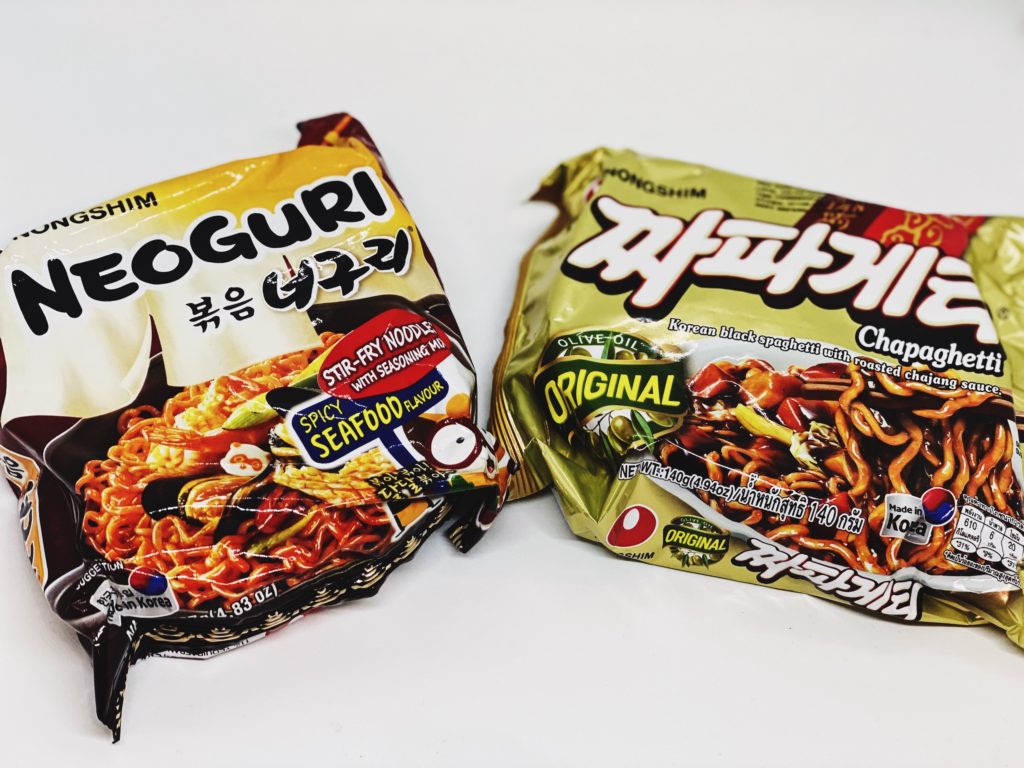
I also mistakenly used all of the seasoning from both the Chapagetti and Neoguri packets. This made for what I like to call a “highly flavoured” dish. A little pungent and really rather salty, it wasn’t what anyone would describe as balanced.
My next attempt was all about getting the noodles right. It is key to use just the right amount of seasoning from each packet so that the base flavour blends seamlessly with the steak. Remember that you don’t want to overwhelm the soft butteriness of the beef.
Finally, I figured that the dish as a whole would be enhanced by the salty-sweet-umami ballad that is gojuchang. I threw in some toasted sesame seeds. Diced a spring onion. And voila!
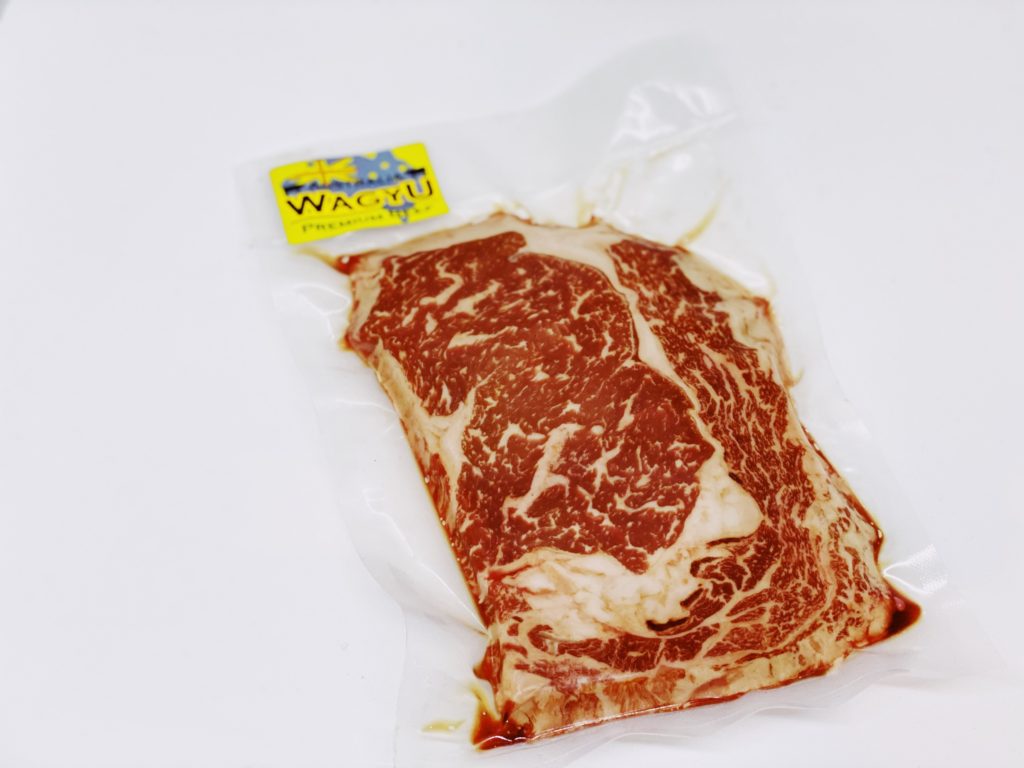
Questions, Notes, and Stray Thoughts
- A crispy, well fried, sunny-side-up egg might just add another layer of richness to the dish.
- Cubing the steak before frying it means you have more surface area that’s been maillard-ed. (Is it a word? It is now!) Mmm. Crispy.
- I can’t help but wonder what Indomie goreng will taste like with some Wagyu on top.
- Maybe I should try this with a mash-up of Indomie and Maggi.
- I’ve eaten far too much beef lately.
The Recipe
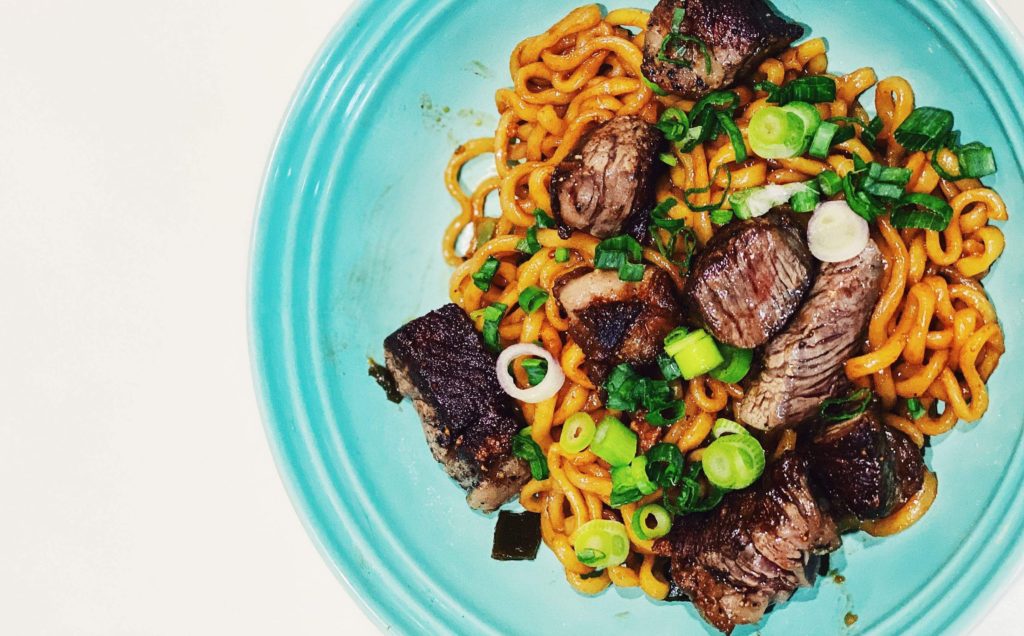
Ingredients
1 well-marbled slab of Japanese Wagyu (or Hanwoo, if you can find it)
1 packet Chapagetti
1 packet Neoguri
1 spring onion
1 tablespoon of a neutral oil with a high smoke point (peanut, canola, extra light olive oil)
1 teaspoon of sesame oil
1 teaspoon of mirin
1 tablespoon of gojuchang
1 teaspoon of honey
1 egg (optional)
toasted sesame seeds
salt
pepper
Directions
- Finely dice the spring onion.
- In a small bowl, whisk together the honey, mirin, sesame oil, and gojuchang. Taste and adjust for flavour. Sprinkle with some sesame seeds. Mix lightly, and set aside.
- Bring about 5 cups of water to boil in a medium sized pot.
- While waiting for the water to boil, prepare the Wagyu. (If your steak was in the fridge, make sure you’ve had it out at room temperature for at least 30 minutes before cooking.) Pat the beef dry with some kitchen roll and season generously on all sides with salt and pepper.
- Cut the steak into small cubes.
- Heat the oil in a skillet over a high heat. (This is why an oil with a high smoke point is essential.) When the skillet is smoking, add the steak and cook for about 3 minutes – or to your preferred doneness. Set aside to rest.
- Once the water is boiling, put in both packets of raw noodles and cook until just tender. Between 4 to 5 minutes.
- Strain the noodles and, as you would when making pasta, make sure you reserve 4 to 5 tablespoons of the starchy water.
- Return the noodles to the pot and, over a low heat, add half the Chapagetti seasoning, half of the Neoguri seasoning, and the reserved noodle water. Leave out the packets of dried vegetable mix. Stir until everything is well blended. (Feel free to add more of the seasoning packets if you prefer a slightly saltier finish.)
- Add the cooked steak to the noodles, drizzle some of the gojuchang sauce on top, and sprinkle with spring onions.
- Enjoy.
- Optional: Throw in a crispy, sunny-side-up egg for even more richness.
